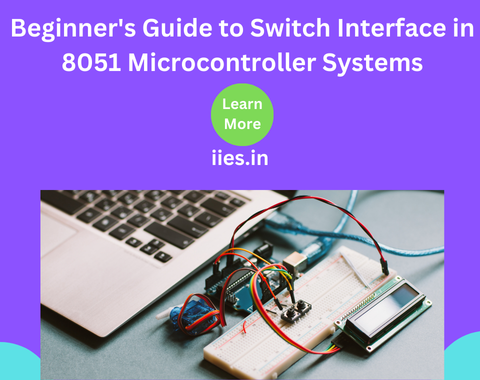
Every system must incorporate an effective user interface to ensure it is user-friendly and straightforward to navigate. Picture a situation where you are using your computer without any display, keyboard, or mouse. Without these vital components, it is impossible to function the system, as they are necessary for both inputting data into the computer and viewing the results on the display. Likewise, an embedded system, such as one that incorporates microcontrollers like the 8051, requires input and output devices to ensure a user-friendly experience. A switch functions as an input device for the microcontroller unit (MCU), and this discussion will cover the process of connecting it to the 8051 MCU.
There is a wide range of shapes and sizes for switches. The core function is to allow for the enabling or disabling of a feature by means of a simple toggle switch. As a result, it serves as an input device through which users can manipulate various aspects of the system. Here are the switches you are likely to encounter most often.

A switch is usually illustrated by a designated symbol in circuit diagrams.

The Push Button operates similarly by closing the circuit as long as it remains pressed.
There are multiple configurations available for connecting a switch to the 8051 MCU, but the core functionality stays consistent. Remember that users usually do not concern themselves with the actual implementation process. The user seeks a mechanism that operates when the switch is ON and ceases operation when the switch is OFF. One way to connect a switch to the 8051 MCU is through the following methods.

Good – Safe to Use Fair – Can be used without much consideration Poor – too much current to the MCU
These represent the traditional approaches to switch interface that can be found online. Certain configurations should be avoided entirely and must not be employed under any circumstances. Take a moment to review these items.
Now how about this:

It seems rather uncomplicated yet continues to operate effectively. The complex issue is that switching it ON will result in a LOW signal being generated while it is grounded, this feature can be utilized to your advantage, as demonstrated in the program code provided below.
Presented here is the C code for implementing the Switch Interface with the 8051 microcontroller. This example also features the use of an LED. For those who are not aware of how to connect an LED to the 8051, reviewing the earlier article is recommended.

We have now reached the conclusion I trust that this information has given you a preliminary insight into the application of a switch in conjunction with the 8051 microcontroller.
Must Read: STM32 ADC: Analog Sensor Reading
Indian Institute of Embedded Systems – IIES